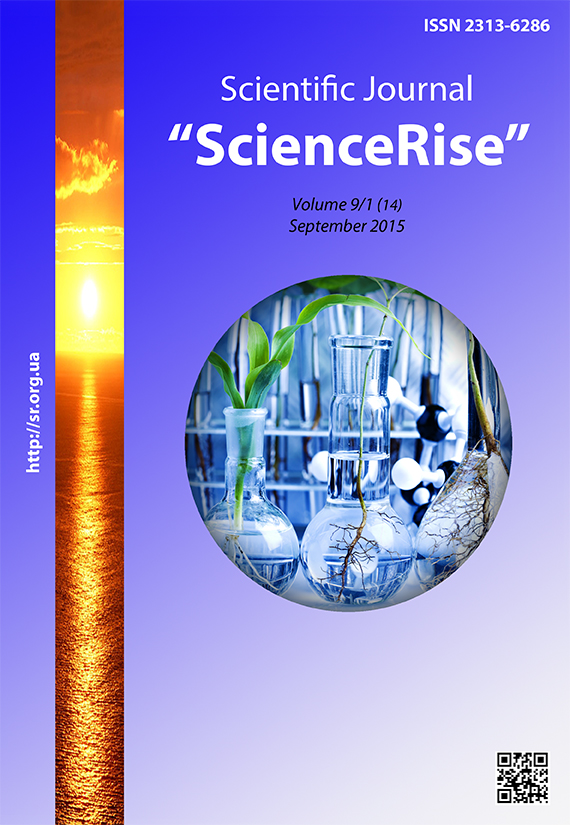Семиотика глагольного знака и обозримый литературный памятник
DOI:
https://doi.org/10.15587/2313-8416.2015.50349Ключові слова:
совершенный вид, несовершенный вид, «Новый Завет», речевая деривация, культура речи, деривационная базаАнотація
В статье рассматривается случай агглютинативного сопряжения «Субъект*Объект». Узлы агглютинативного сопряжения выявляют фрагмент субстантивированных причастий в тюркско-кавказском памятнике. В рамках анализа тюркско-кавказского фрагмента выделяются двувидовые единицы переходных/непереходных форм. Представляется возможным актуализировать деривационный принцип двувидовых единиц в языках каспийского региона и получить дополнительную аргументацию, главным образом, в пользу субстантивированных причастий «Нового Завета»
Посилання
Telia, V. N. (1986). Connotative aspect of semantics of nominative units. Мoscow, 143.
Nikolaeva, T. M. (Ed.) (1979). Category of certainty-uncertainty in the Slavic and Balkan languages. Мoscow, 368.
Shihsaidov, A. R. (1984). Epigraphic monuments of Dagestan X-XVII centuries as a historical source. Мoscow, 3.
Buhler, K. (2000). Language Theory. Moscow, 129.
Smagina, E. B., Newman, B. M. (2000). The New Testament and his tongue. Greek-Russian Dictionary of the New Testament. Мoscow, 112.
Baskakov, N. A. (1940). Nogai language and its dialects. Мosocow–Leningrad, 572.
Mamedova, F. (1986). Political history and historical geography of Caucasian Albania. Baku, 284.
Shihsaidov, A. R. (1986). Al-Tabari «History kings and ambassadors» about the peoples of the North Caucasus. Monuments of history and literature of the East. Moscow, 66.
Haidakov, S. M. (1973). Comparative Comparative Dictionary Dagestan languages. Мoscow, 123.
Kadyradzhiev, K. S. (1992). Some morphological features Kumyk dialect dialect study. Dagestan languages. Makhachkala, 112.
Leontovich, O. A. (2011). Methods of Communication Studies. Мosocow, 224.
Orazaev, G. M.-R. (2007). Turkic-speaking business correspondence in the North Caucasus XVII-XIX centuries: (Research, texts and comments). Makhachkala, 14.
Desheriev, Y. D., Desherieva, T. I. (2001). Ingush language. Languages of the World: Caucasian languages. Мosocow, 191.
Abdullaev, I. H. (2013). Some aspects of the study of the Dagestan anthroponomy. Bulletin of the Institute IJALI them. G. Tsadasa. Makhachkala, 3, 112.
Vinogradov, V. V. (1959). On the language of literature. Мoscow, 656.
Shikhaliyev, S. H. (2014). Philosophical and cultural concept of «New Testament» and the implementation of the mechanism of natural emotions. Proceedings of the International Symposium of the electronic «Integration of science and practice as a mechanism for the effective development of a modern society». Makhachkala, 114.
Baysultanov, D. B. (2006). Expressive-stylistic characteristic phraseology of the Chechen language. Leiden, 405.
Dabak, V. (2008). Vocabulary nidzh dialect. Udi language compilation. Grammar. Vocabulary. The history of the language. Мosocw, 324.
Gadzhiahmedova, N. E. (2000). Inflection category name and the verb in the Kumyk language. Мoscow, 123.
Gak, V. G. (1977). Comparative lexicology. Мosocw, 264.
##submission.downloads##
Опубліковано
Номер
Розділ
Ліцензія
Авторське право (c) 2015 Сабрина Ханалиевна Шихалиева, Сабина Мугутдиновна Курбанова

Ця робота ліцензується відповідно до Creative Commons Attribution 4.0 International License.
Наше видання використовує положення про авторські права Creative Commons CC BY для журналів відкритого доступу.
Автори, які публікуються у цьому журналі, погоджуються з наступними умовами:
1. Автори залишають за собою право на авторство своєї роботи та передають журналу право першої публікації цієї роботи на умовах ліцензії Creative Commons CC BY, котра дозволяє іншим особам вільно розповсюджувати опубліковану роботу з обов'язковим посиланням на авторів оригінальної роботи та першу публікацію роботи у цьому журналі.
2. Автори мають право укладати самостійні додаткові угоди щодо неексклюзивного розповсюдження роботи у тому вигляді, в якому вона була опублікована цим журналом (наприклад, розміщувати роботу в електронному сховищі установи або публікувати у складі монографії), за умови збереження посилання на першу публікацію роботи у цьому журналі.

